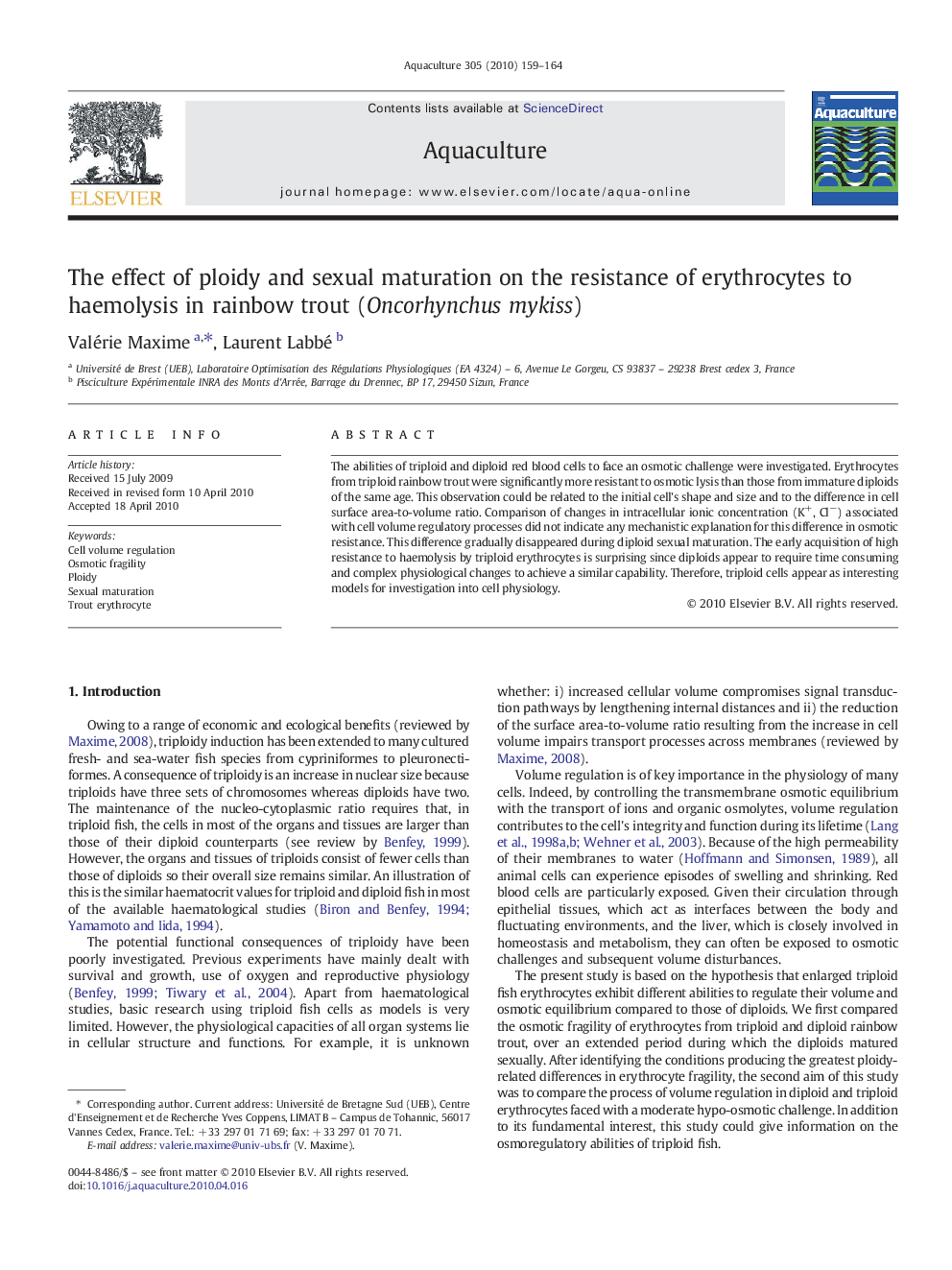| Article ID | Journal | Published Year | Pages | File Type |
|---|---|---|---|---|
| 2423542 | Aquaculture | 2010 | 6 Pages |
The abilities of triploid and diploid red blood cells to face an osmotic challenge were investigated. Erythrocytes from triploid rainbow trout were significantly more resistant to osmotic lysis than those from immature diploids of the same age. This observation could be related to the initial cell's shape and size and to the difference in cell surface area-to-volume ratio. Comparison of changes in intracellular ionic concentration (K+, Cl−) associated with cell volume regulatory processes did not indicate any mechanistic explanation for this difference in osmotic resistance. This difference gradually disappeared during diploid sexual maturation. The early acquisition of high resistance to haemolysis by triploid erythrocytes is surprising since diploids appear to require time consuming and complex physiological changes to achieve a similar capability. Therefore, triploid cells appear as interesting models for investigation into cell physiology.
